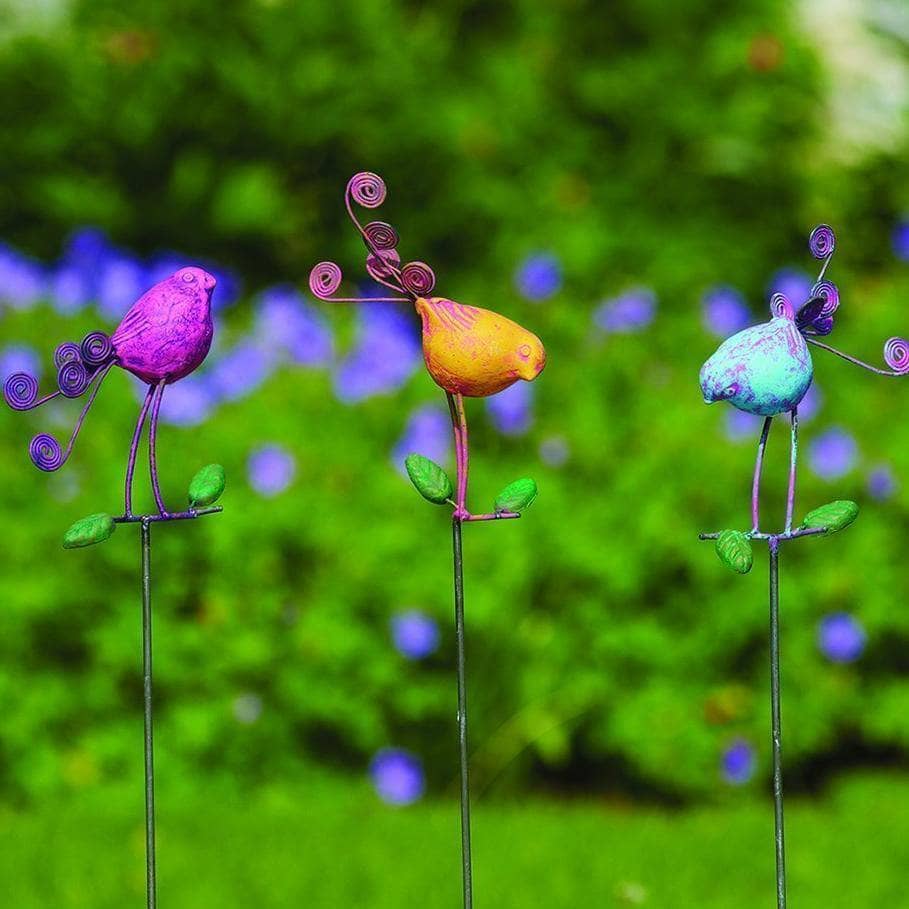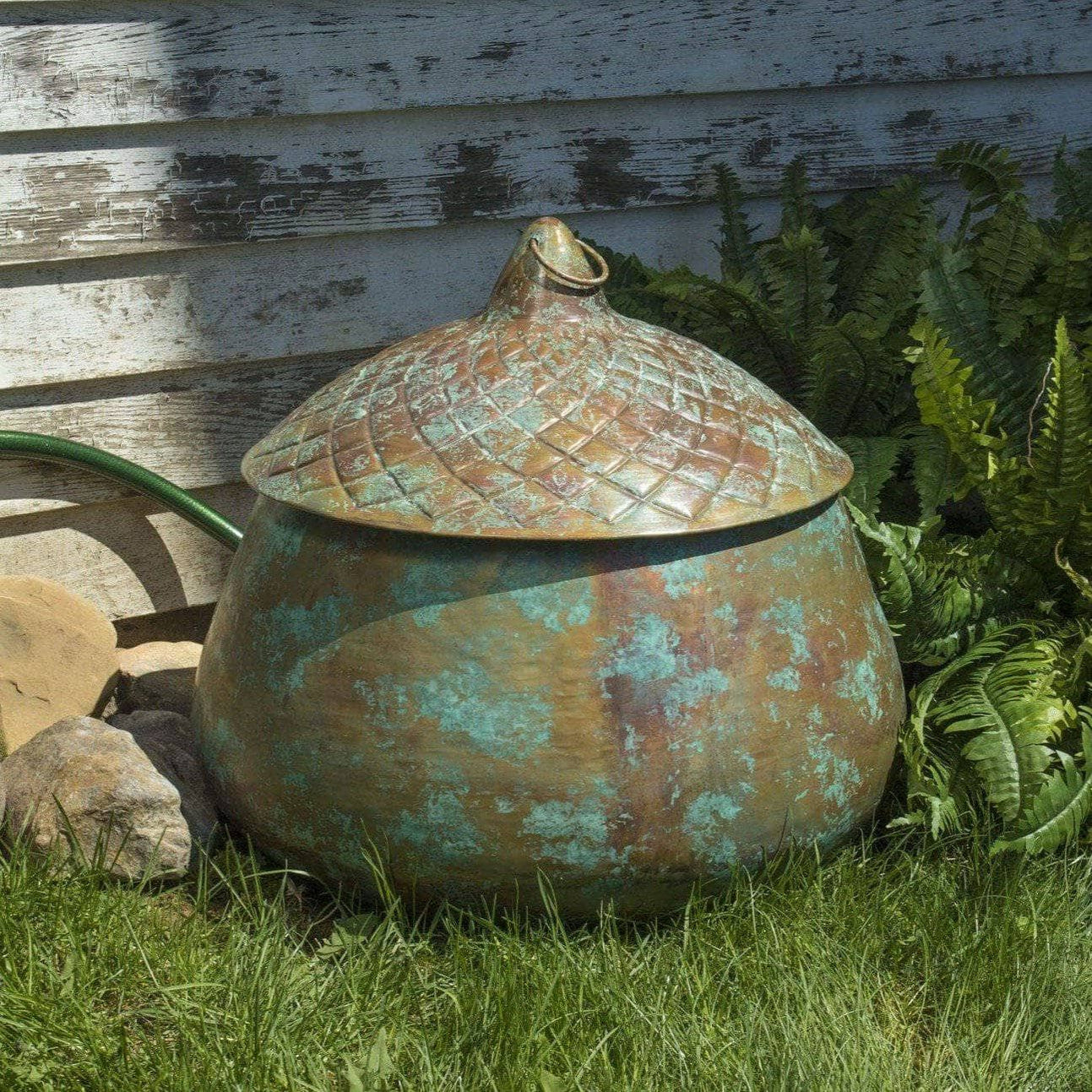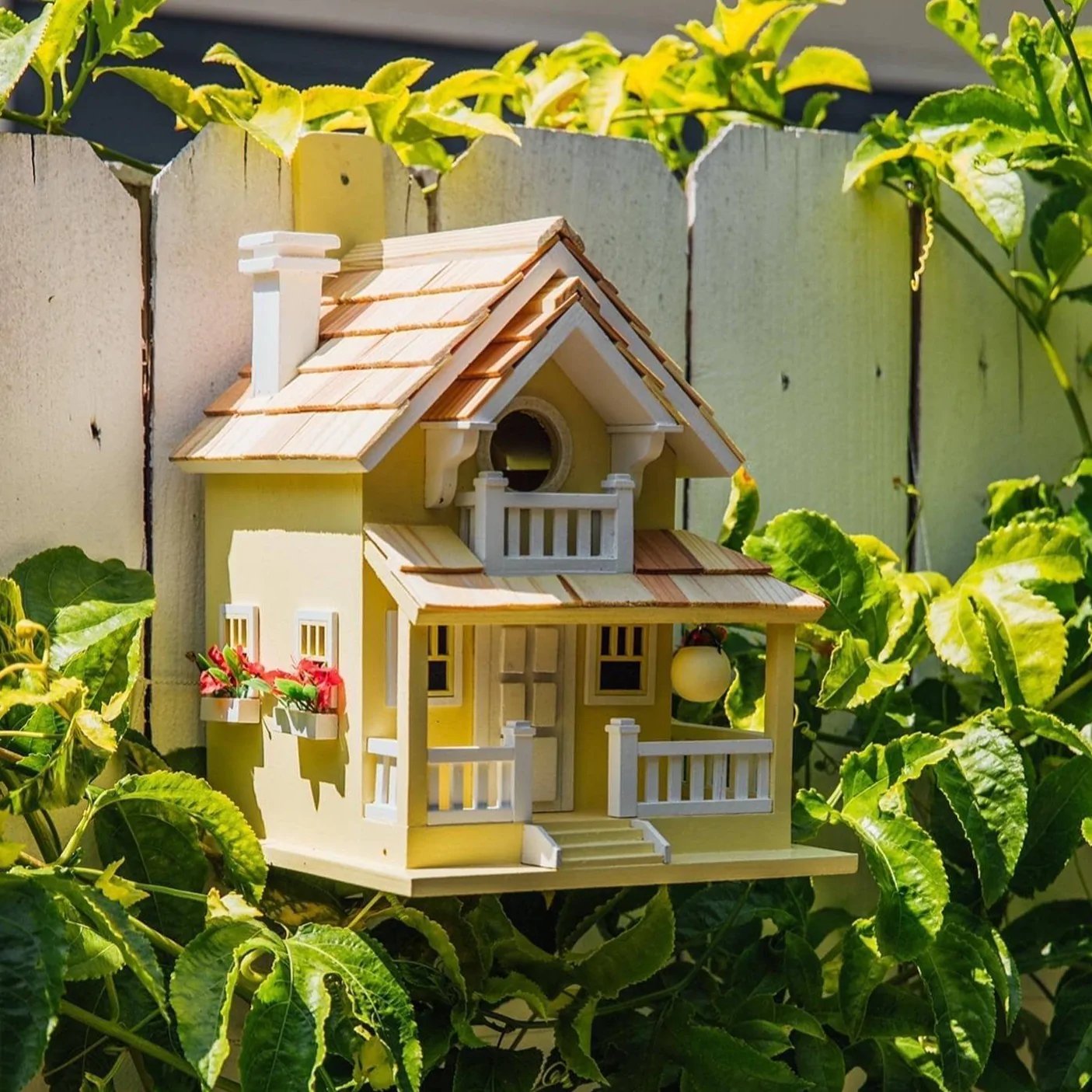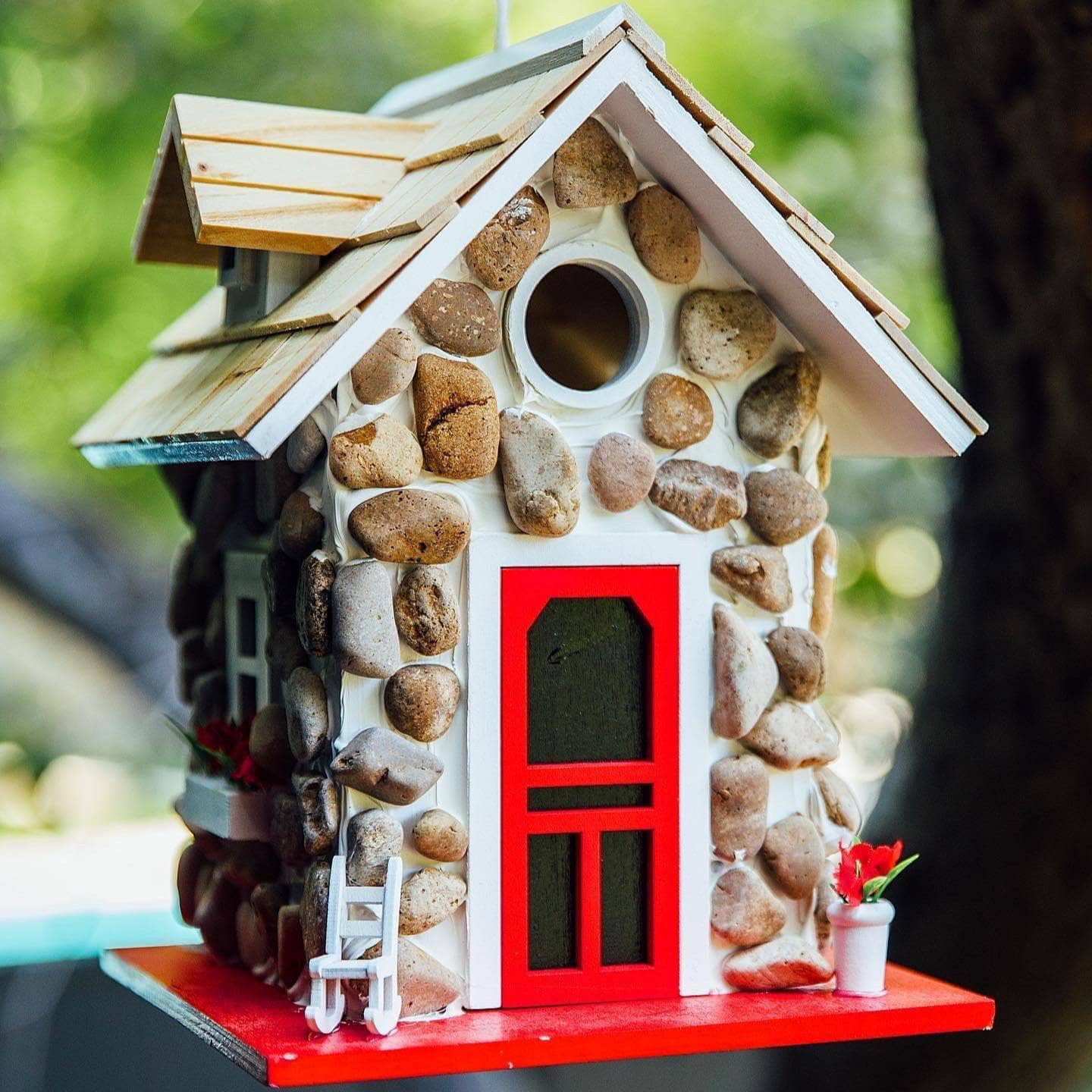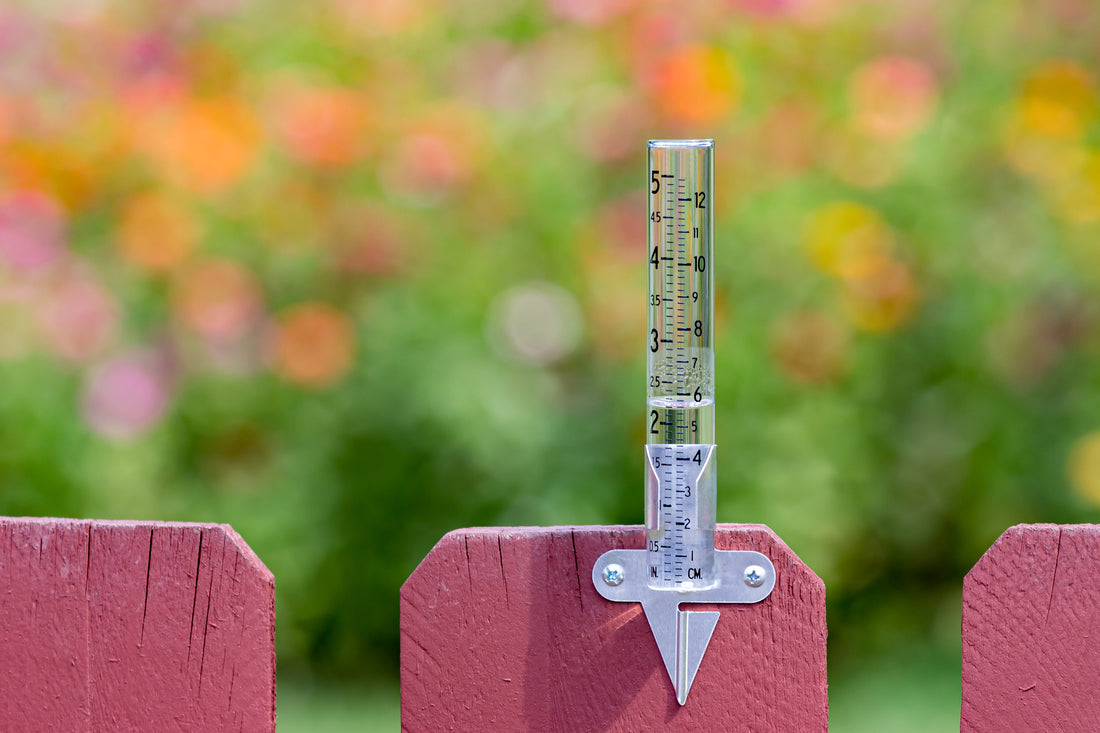
How Does A Rain Gauge Measure Rainfall?
Share
People have always shown an interest in measuring rainfall for several different reasons. Dating back as early as the fourth century, measuring rainfall has seen many other methods.
It wasn't until the 13th century that the concept of a rain gauge was invented. From then on, the primary concept and purpose of a gauge have primarily remained the same, with varying differences across the globe.
Known as one of the most easy-to-use and reliable sources for measuring rainfall, rain gauges are a helpful garden tool. But, before you go out finding a gauge of your own, let's take a closer look at some of the basics.
What Is a Rain Gauge?
First things first, you might be wondering what a rain gauge is. Rain gauges go by many different names, including an ombrometer, a pluviometer, or an udometer.
By definition, a gauge measures rain precipitation through a predetermined time per unit area. Hydrologists and meteorologists alike use this meteorological instrument to measure rainfall.
How Does a Rain Gauge Work?
A rain gauge boasts a simple design consisting of a collection container. The container is placed into an open area to collect rainfall during any given amount of time.
The assumption with these gauges is that the same amount of rain will be falling in the general area as the contained area serving as the recipient.
Rain gauges can come in different shapes and sizes, but the most common form is a standard cylindrical vessel. It's important that the indicator not be too big or too small to be most effective. The design of a rain gauge prevents any evaporation before you can read the measurement of the rainfall.
How Rain is Measured
As previously mentioned, a gauge is placed into an open area where it collects rainfall for any given amount of time. In the United States, a rain gauge typically measures rainfall in inches.
Why Rain is Measured in Inches
Having a general measurement for rainfall makes readings on rain gauges more accurate across the country. Inches are the preferred unit of measure for rain gauges in the United States.
In using inches for measuring rainfall depth, you can take the collection from a gauge and determine the number of inches of rainfall observed in a particular area for a predetermined period.
While it might be challenging to conceptualize rain in terms of inches, consider this - you can quickly determine that one inch of rainfall in a month is a significantly smaller amount than one inch of rainfall in an hour. As such, you can get a better understanding of heavy rain based on how much rain fell during a given time.
One inch of rainfall might not seem like a significant figure when in fact, it truly is. One inch of rainfall is enough to cover flat ground entirely. It is also the equivalent of 4.7 gallons of water per square yard.
How Rain is Measured in Inches
Now that you understand why rain gauges measure rainfall in inches, you must be wondering how it can produce that figure. It's simple. The design of a gauge is marked with water levels corresponding to inches.
Some rain gauges require calibrations which will help to provide a more accurate reading of the rainfall at any given time.
Types of Rain Gauges
Because the gauge has been around for so long, it's no surprise that there are various types readily available today. Some of the most popular you will find include a standard rain gauge, a tipping bucket gauge, a weighing rain gauge, and a less commonly found weighing gauge.
Standard Rain Gauge
A standard or universal weighing rain gauge is a simple design used by the World Meteorological Organisation. These primary rain gauge types consist of a measuring tube that collects falling rain. You can easily measure how much rain has fallen by checking the standard gauge for precise measurement.
Tipping Bucket Rain Gauge
Unique for a standard rain gauge, a tipping bucket rain gauge is much more comprehensive. As a result, the measurement taken from a tipping bucket rain gauge is generally more accurate. Thankfully, the overall design of a tipping bucket rain gauge is still considerably simple.
The precise measurements can be attributed to the seesaw design of how the gauges work. A receiving funnel collects the rainfall and transfers it into a second bucket. The gauge tipping bucket design helps deliver data at more accurate measurements than the basic operation of a graduated cylinder.
The funnel rain gauge works by collecting as rain falls and transferring through the funnel shaped collector to small buckets. These small buckets are where you can measure depth of heavy rainfall.
Weighing Rain Gauge
A weighing gauge uses one bucket as a storage bin to accurately measure rainfall. The weighing mechanism of these weather instruments allows measuring rainfall intensity by measuring the total rainfall in time and depth at once.
Unlike other tipping bucket gauges, a weighing rain gauge also works to measure different forms of precipitation. Aside from rain drops, a weighing rain gauge can also measure snow and hail. The design of the bucket gauge maximizes tube capacity so that it can hold more rain and other precipitation.
Optical Rain Gauge
For more technical climatology use, meteorologists use an optical rain gauge for measurements. This rain gauge utilizes a light source, typically a laser, along with an optical detector.
This style of rain gauge is relatively expensive, as you can imagine, as it measures rainfall through a gap between the laser and optical detector. This gauge may help meteorologists to get a better understanding of rain drop size.
Where to Buy Rain Gauges
Now that you have a better idea of what rain gauges are and how they function, you might be interested in finding one for your garden. Thankfully, we're here to help by ensuring that you know where to shop for a tasteful yet practical rain gauge to keep your garden looking its best.
As you now know, rain gauges come in various styles, including a wide range of shapes and sizes. You can easily find rain gauges that are made from different types of materials, depending on your style.
When you start your searches, you might find that narrowing down your options isn't always the simplest task. So, to help get you started on the right foot, here are a few ideas on where to buy a rain gauge of your own to help you maintain the garden of your dreams.
Local Second Hand Shops
Make a pit stop at your local second-hand shop to see if you can find any artsy rain gauges in the garden section. Since you're not guaranteed to find what you are looking for when shopping at second-hand shops, make sure you go into this shopping experience with an open mind. You might not find exactly what you're looking for but might be able to pick up some exciting materials to craft a rain gauge of your own if you're feeling up for it.
Facebook Marketplace
Or, for those who aren't feeling quite as crafty and prefer something that's already made, you can try your hand at Facebook Marketplace. This online marketplace is a great way to see if anyone in your area is trying to get rid of an old or unused rain gauge. If you're feeling lucky, you can even search through the free section to see if you can find something to take of someone else's hands.
Since a rain gauge is relatively inexpensive, people might be willing to part with them at no cost to you. Sometimes, it's just a matter of having patience and looking through Facebook Marketplace for a few days.
Happy Gardens Store
Shopping for a rain gauge at the Happy Gardens Store is highly recommended for gardeners who aren't willing to compromise on quality or craftsmanship. Here, you can search through our rain gauge collection to find something that matches your garden's aesthetic, like this charming Spice Bird Rain Gauge.
But our items aren't just limited to rain gauges. You'll find things that have been designed by artists and hand-selected by the Happy Gardens team throughout our online store. We're always happy to help spark some creativity and inspiration since making your backyard dreams come true is what we live for, after all.
About Happy Gardens
You'll want to take a look at the Happy Gardens online collection if you're looking for thoughtful and unique garden pieces and merchandise that are great for all outdoor spaces. If you're unsure how to pick out the perfect rain gauge for your garden, you can try asking one of us via chat. After all, here at Happy Gardens, we're happy to help!
Stay up to date on the latest and greatest happenings at Happy Gardens by joining our mailing list. Simply enter your name & email address to look forward to limitless fun along with gardening tips and tricks flooding your newsfeed right away. For even more inspiration, follow us on Instagram and Facebook!
